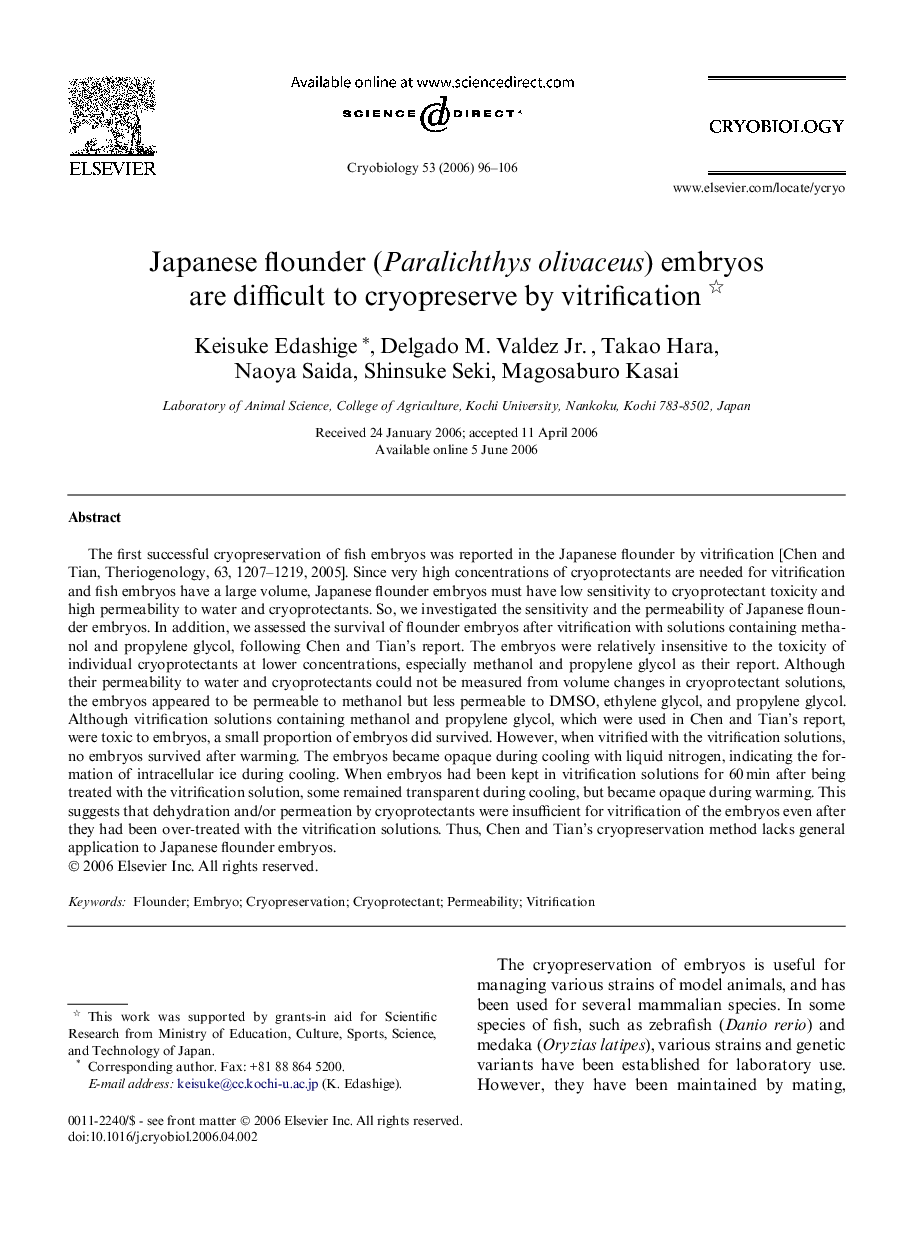| کد مقاله | کد نشریه | سال انتشار | مقاله انگلیسی | نسخه تمام متن |
|---|---|---|---|---|
| 2169242 | 1092931 | 2006 | 11 صفحه PDF | دانلود رایگان |

The first successful cryopreservation of fish embryos was reported in the Japanese flounder by vitrification [Chen and Tian, Theriogenology, 63, 1207–1219, 2005]. Since very high concentrations of cryoprotectants are needed for vitrification and fish embryos have a large volume, Japanese flounder embryos must have low sensitivity to cryoprotectant toxicity and high permeability to water and cryoprotectants. So, we investigated the sensitivity and the permeability of Japanese flounder embryos. In addition, we assessed the survival of flounder embryos after vitrification with solutions containing methanol and propylene glycol, following Chen and Tian’s report. The embryos were relatively insensitive to the toxicity of individual cryoprotectants at lower concentrations, especially methanol and propylene glycol as their report. Although their permeability to water and cryoprotectants could not be measured from volume changes in cryoprotectant solutions, the embryos appeared to be permeable to methanol but less permeable to DMSO, ethylene glycol, and propylene glycol. Although vitrification solutions containing methanol and propylene glycol, which were used in Chen and Tian’s report, were toxic to embryos, a small proportion of embryos did survived. However, when vitrified with the vitrification solutions, no embryos survived after warming. The embryos became opaque during cooling with liquid nitrogen, indicating the formation of intracellular ice during cooling. When embryos had been kept in vitrification solutions for 60 min after being treated with the vitrification solution, some remained transparent during cooling, but became opaque during warming. This suggests that dehydration and/or permeation by cryoprotectants were insufficient for vitrification of the embryos even after they had been over-treated with the vitrification solutions. Thus, Chen and Tian’s cryopreservation method lacks general application to Japanese flounder embryos.
Journal: Cryobiology - Volume 53, Issue 1, August 2006, Pages 96–106